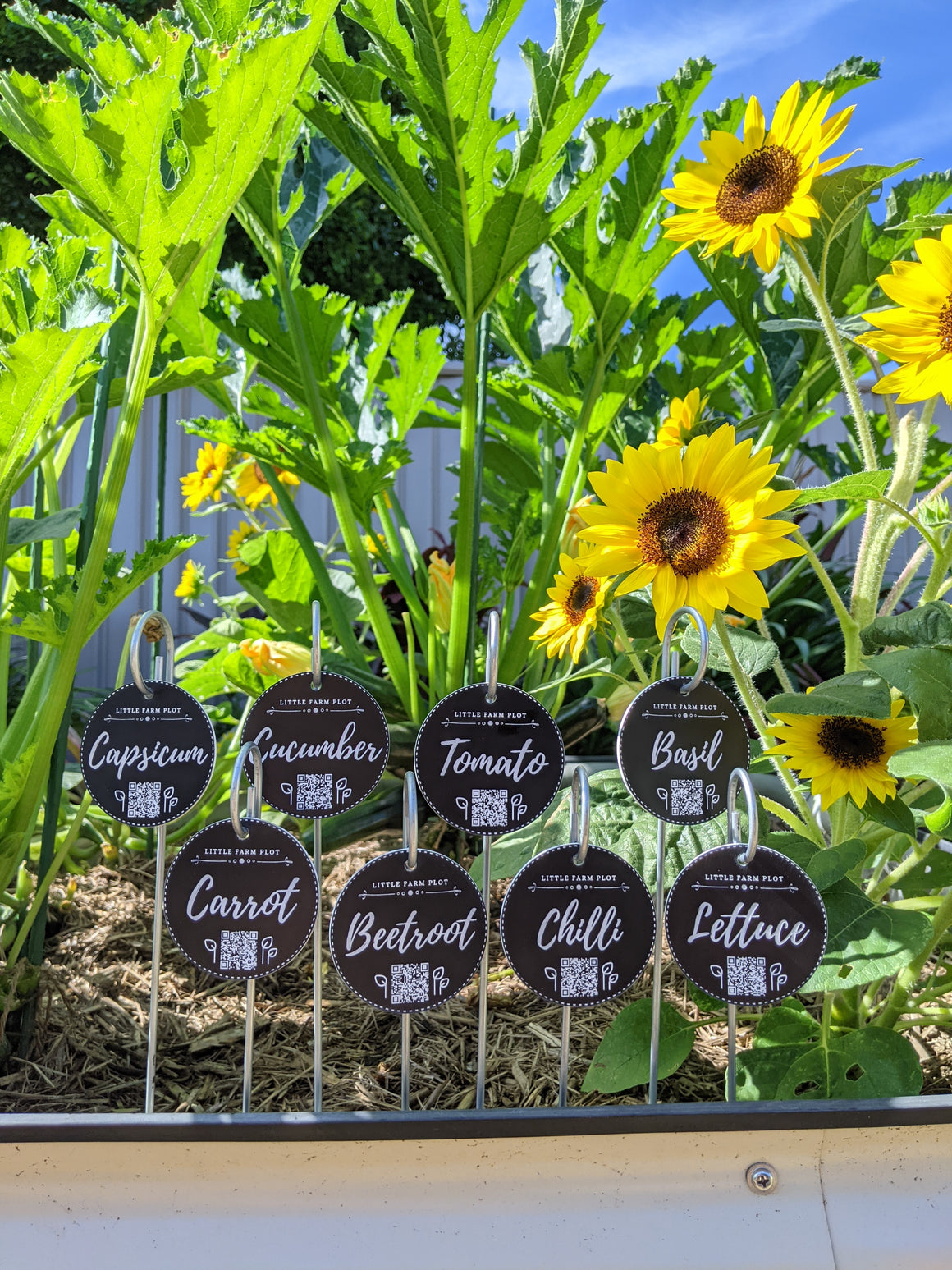WE ARE CURRENTLY NOT TAKING ONLINE ORDERS. CONTACT US FOR PURCHASE ENQUIRIES.
Growing Guide: Mint
Mint is a hardy, easy to grow herb that makes a wonderful addition to any edible garden. It is a long living perennial that will continually give you plenty to harvest. It has been cultivated since ancient times and is referenced in the Bible and Greek mythology. Mint has a variety of uses from herbal tea to pest control which makes it an essential element in any backyard garden.

Plant
- Mint is very invasive and can take over your whole vege plot if it isn't contained. For this reason it is best grown in a large pot at least 30cm.
- It is best grown with a cutting from a mature plant or from seedling. If you use a cutting, choose a stem that has partial roots forming.
- Use a premium potting mix that will hold moisture and mix through a slow release fertliser.
- The best part about keeping your mint in a pot, means you can reposition it depending on the season. In cooler months, place in full sun to part shade. In the Summer months place the pot in full shade otherwise your mint leaves can become leathery.
- Don't plant different mint varieties side by side. They can lose their individual scent and flavour.
Grow
- Prune back your mint plant if your mint leaves start to look dry and yellow or the stems become long and spindly. This will encourage new lush growth.
- Mint can be an unruly plant, keep it controlled with regular pruning. This will also promote new shoots.
- Remove any flower heads to prolong your harvest. If it is getting close to time to prune, let it go to flower to encourage bees into your garden.
- Water regularly and consistently. Mint thrives in a moist environment. Feed with a liquid fertiliser fortnightly to encourage strong root development and leaf growth.
Harvest and Use
Harvest mint by simply picking fresh leaves as needed. If you plan to give your plant a prune back you can pick all the leaves and freeze them or use the cuttings as mulch.- As long as your mint is disease free, use cuttings as a mulch in your garden to naturally deter pests. The strong scent of mint repells carrot fly, white cabbage moth and aphids.
- Add mint to your favourite drink, green tea or water for an added sweet flavour.
- Steep in a warm bath to release its fragrance and medicinal properties.
- Mint can be added to vinegars, sauces and jellies as a condiment to lamb and fish.
- Chop it up and add to your Summer salads for a fresh flavour!
- Crush and rub leaves over your skin for a natural mosquito repellent!
Varieties
When deciding which variety to grow it can be helpful to take a leaf and rub it between your fingers to release the aroma because it will taste just as it smells. Mint is a very diverse species. We recommend growing a number of different mint based on how you want to use it. Below is a list of common varieties and their uses.
- Peppermint - Plant this variety if you want to use mint for medicinal purposes. Grows to 30-60cm.
- Curly Mint - Grows 45-60cm. Leaf is bright green and crinkled/frilly. Good culinary variety.
- Spearmint - Most common variety. Grows green pointed leaves with serrated edges. Best variety for condiments.
Sign up for special VIP offers & be the first to know when we launch new products!
© 2025 Little Farm Plot.
Powered by Shopify



